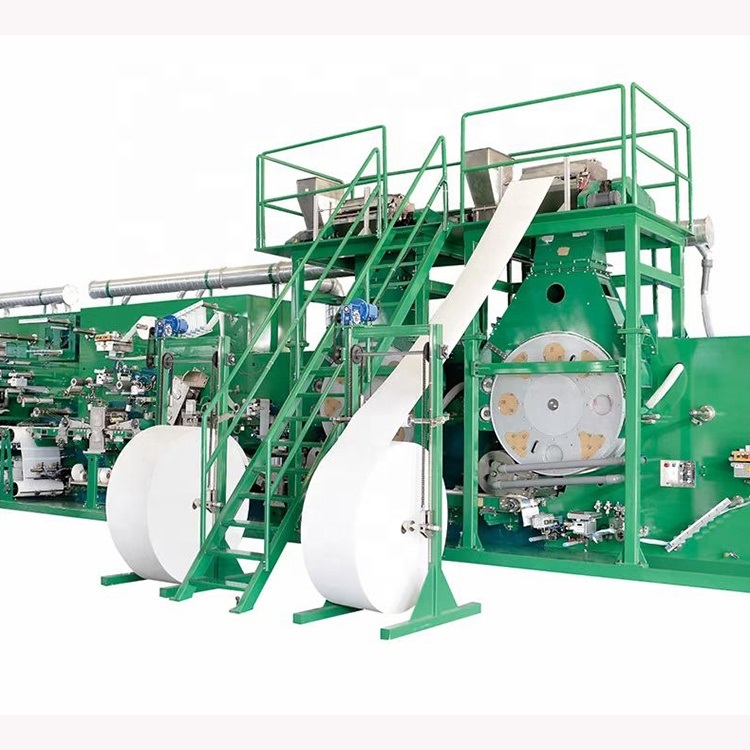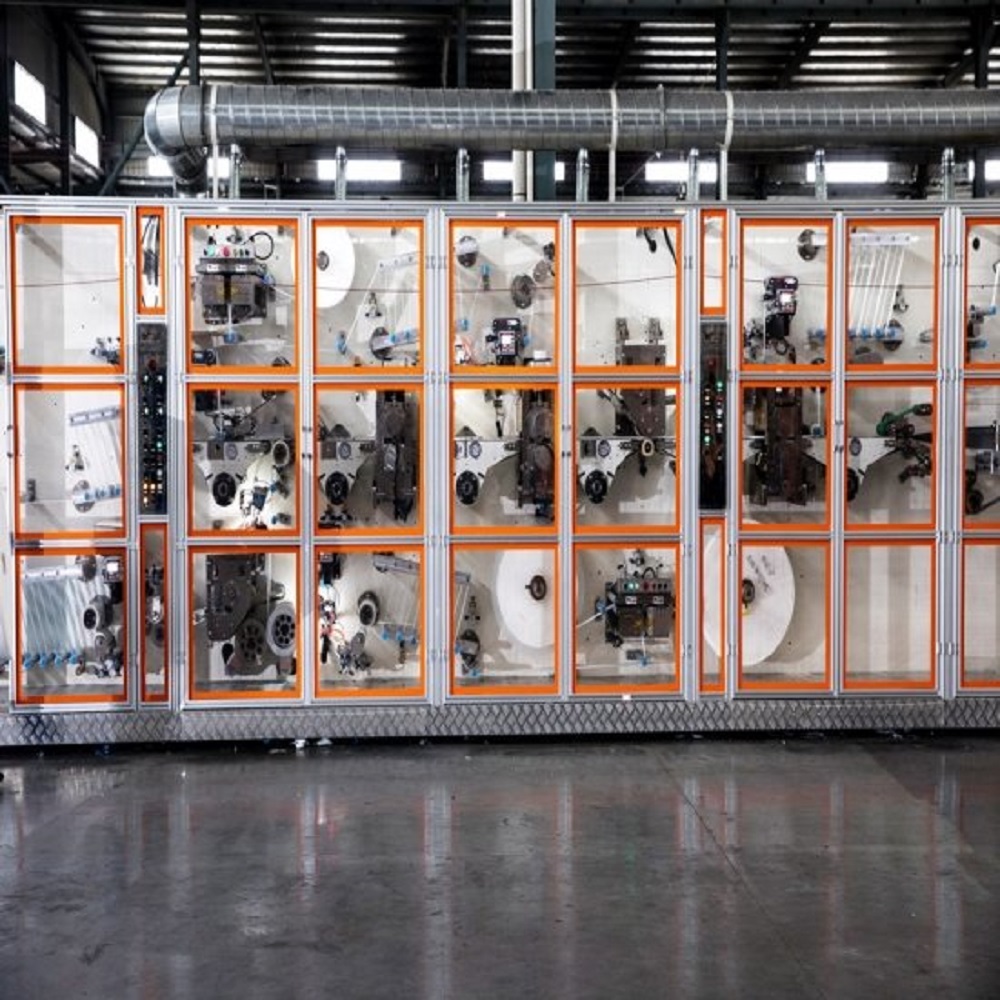Thank you for choosing our fully automatic sanitary napkin machine. In order to ensure that the equipment can achieve the best performance and extend its service life, we need to understand the correct installation steps. This installation guide provides comprehensive and detailed operation instructions to help you successfully install, configure, and run the device for the first time. Whether you are new to operating this type of equipment for the first time or an experienced technician, this guide will provide you with clear guidance and professional advice to ensure that the installation process is safe, efficient and correct.
Installation Notice
Before installing, be sure to read the entire installation guide carefully to understand the purpose and requirements of each step. This can avoid repeated operations, missing critical steps, or security risks during the installation. The entire installation process needs to be carried out in a safe working environment to avoid factors that may affect the installation, such as narrow Spaces, unstable floors, improper tool use, etc. It is recommended that at least two technicians perform the installation and commissioning at the same time to ensure the correct execution of the steps and improve the installation efficiency.
If you encounter any problems or uncertainties during the installation process, stop the operation immediately and carefully review the relevant parts of this guide to avoid unnecessary damage or operation errors. You can also contact our customer support team at any time for further assistance and technical guidance.
Unpacking Inspection
An unpacking inspection must be carried out before installation begins. First, carefully unpack the sanitary napkin machine and carefully check whether the equipment has suffered any damage during transportation. Make sure all parts and accessories are complete, including machine body, power lines, pipes, fasteners, and any necessary tools and instructions. Any missing parts or damaged areas may affect the installation and subsequent use of the machine. If you find any issues or missing parts, please contact the customer support team immediately and we will provide timely assistance to resolve the issue quickly.

Select the Installation Position
Choosing the right installation location is essential to ensure the long-term stable operation of the machine. It is recommended to place the machine in a clean, dry and well-ventilated area to avoid the impact of moisture and dust on the equipment. Make sure there is enough space around to accommodate the machine size for easy operation and maintenance. The machine should be placed on a solid and level ground to ensure its stability and prevent vibration or displacement during operation. For heavy equipment, it is recommended to use a shock pad or base to further enhance stability. The installation location should be away from flammable materials and high temperature areas to ensure safety.
Power Connection
Ensure that the power supply required by the machine meets the specified voltage and frequency requirements. Connect the machine to a stable and reliable power source and be sure to ground properly to avoid electrical safety hazards. All power cords and plugs should be in good condition and should not show any signs of breakage or wear. If any damage is found, replace it immediately. It is recommended to install a leakage protection switch on the power cable to prevent dangers caused by excessive current or leakage. In addition, avoid placing the power cord in a place where it is vulnerable to mechanical damage or chemical corrosion.
Pipe and Fittings Connection
Connect all relevant pipes and fittings correctly according to the installation diagram supplied with the machine. Each connection point needs to be securely secured and leak-free. It is recommended to use a suitable sealing material, such as sealing tape or sealing gasket, during installation to improve the tightness of the connection. After installation, the alignment and positioning of each component should be carefully checked to ensure that the machine will not be loose or misaligned during operation. Special attention is paid to the correct connection of hydraulic and pneumatic pipelines to prevent improper connection from affecting production efficiency or causing damage to the machine. If necessary, use appropriate tightening tools to ensure that all connections are secure and secure.
Control Panel Settings
The control panel is the core of the whole machine operation, and its correct setting will directly affect the production efficiency and product quality. Configure the parameters of the control panel according to the instructions provided. Through the control panel, you can set the size, thickness, quantity, production speed and other parameters of sanitary napkins. It is recommended that operators familiarize themselves with the position of all functions and buttons and understand how to adjust parameters quickly to meet different production needs. In addition, it is recommended to back up the data after the initial setup so that it can be restored quickly if needed. Control panel operators should be professionally trained to ensure that parameters can be set and adjusted quickly and accurately.

Test and Calibration
After all the setup is complete, conduct a full test run. Start the machine and observe its operation, listen carefully for abnormal sounds, and pay attention to whether there is vibration or abnormal operation. Pay close attention to the output quality of the product during the testing process, and adjust and calibrate immediately if necessary to ensure that the produced product meets the quality standard. It is recommended to carry out multiple tests to gradually optimize various parameters and achieve the optimal production state. During testing, detailed records are kept for future reference and further optimization.
Operator Training
Professional training of operators is key to ensuring efficient and safe operation of machines. Provide detailed training courses for operators, including the basic operation process of the machine, the use of various functions, routine maintenance points, and the treatment of common faults. Ensure that operators are aware of all safe operating procedures, especially when it comes to power supplies and high-temperature components. Training should include a combination of practical and theoretical knowledge to enable operators to operate effectively and troubleshoot in any situation.
Maintenance and Troubleshooting
In order to extend the service life of the machine and ensure its long-term stable operation, regular maintenance is essential. Develop a detailed maintenance plan, including cleaning, lubrication, replacement of worn parts, etc. It is recommended to check the condition of all components after each use to ensure that there is no abnormal wear or damage. Clean equipment regularly, especially where dirt accumulates during production, such as cutting blades, conveyor belts and sensors. Train operators on how to identify common problems, such as production failures or alarm alerts, and instruct them on how to take appropriate corrective action. Timely preventive maintenance and troubleshooting can significantly reduce downtime and increase productivity.
Conclusion
By following this installation guide, you should be able to successfully complete the installation and initial commissioning of the fully automatic sanitary napkin machine. Keep in mind that regular monitoring and maintenance of machines is key to ensuring continuous and efficient production. If you encounter any difficulties during the operation or require technical support, please feel free to refer to the troubleshooting section, or contact the customer support team and we will be happy to help you. Always focusing on the safety of the operator and the optimal operation of the machine will ensure the maximum return on your investment and continue to bring you a quality production experience.




